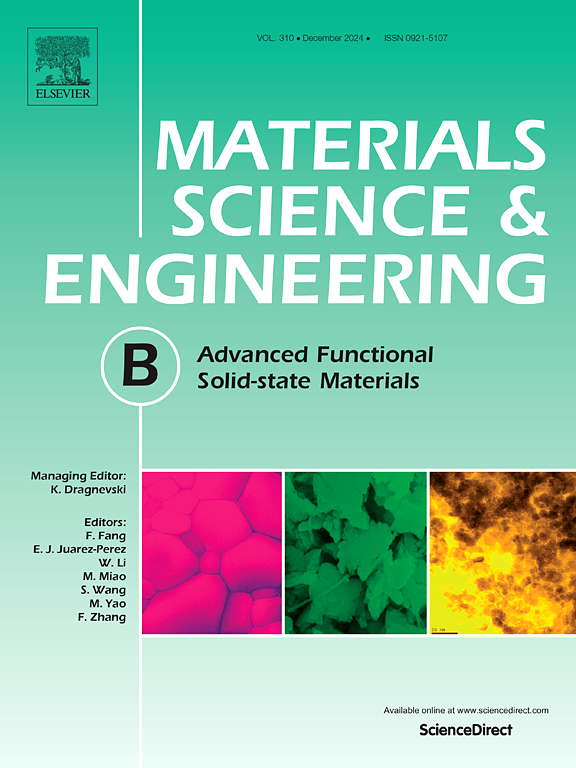采用湿式粉末喷涂法制备薄电解质层的质子导电陶瓷电池
IF 3.9
3区 材料科学
Q2 MATERIALS SCIENCE, MULTIDISCIPLINARY
引用次数: 0
摘要
质子导电高温固态电化学电池(PCCs)的发展对能量转换和存储至关重要。本文制备了SrZr0.5Ce0.4Y0.1O3-δ (SZCY) / NiO负载电池,并采用湿式粉末喷涂(WPS)沉积了3 μm BaZr0.16Ce0.64Y0.1Yb0.1O3-δ电解质。在1375℃共烧结得到了具有大晶粒的致密电解质层。SZCY衬底的Sr扩散补偿了Ba的蒸发,防止了富y二次相的形成,从而提高了烧结性能。STEM证实了元素扩散,并验证了质子在薄电解质层中无晶界阻碍的输运。制备的PCC在燃料电池模式下,在0.7 V和600°C下达到422 mW cm - 2,表现出具有竞争力的电化学性能。由于衬底预处理过程中的污染,电解质层中的微小缺陷有助于在较低温度下降低开路电压(OCV)。这项工作证明了WPS可扩展制造具有增强电化学性能的薄PCC电解质层的可行性。本文章由计算机程序翻译,如有差异,请以英文原文为准。
Advancing proton-conducting ceramic cells with thin electrolyte layers prepared by wet powder spraying
The development of proton conducting high temperature solid state electrochemical cells (PCCs) is vital for energy conversion and storage. Here, a SrZr0.5Ce0.4Y0.1O3-δ (SZCY) / NiO supported cell with a 3 μm BaZr0.16Ce0.64Y0.1Yb0.1O3-δ electrolyte, deposited by wet powder spraying (WPS), was fabricated. Co-sintering at 1375 °C yielded a dense electrolyte layer with large grains. Sr diffusion from the SZCY substrate compensated for Ba evaporation, preventing the formation of Y-rich secondary phases and thereby enhancing sinterability. STEM confirmed elemental diffusion and verified the proton transport without grain boundary obstruct in the thin electrolyte layer. The fabricated PCC achieved 422 mW cm−2 at 0.7 V and 600 °C in fuel cell mode, demonstrating competitive electrochemical performance. Minor defects in the electrolyte layer contributed to reduced open-circuit voltage (OCV) at lower temperatures, attributed to contamination during substrate pre-treatment. This work demonstrates the viability of WPS for scalable fabrication of thin PCC electrolyte layers with enhanced electrochemical performance.
求助全文
通过发布文献求助,成功后即可免费获取论文全文。
去求助
来源期刊

Materials Science and Engineering: B
工程技术-材料科学:综合
CiteScore
5.60
自引率
2.80%
发文量
481
审稿时长
3.5 months
期刊介绍:
The journal provides an international medium for the publication of theoretical and experimental studies and reviews related to the electronic, electrochemical, ionic, magnetic, optical, and biosensing properties of solid state materials in bulk, thin film and particulate forms. Papers dealing with synthesis, processing, characterization, structure, physical properties and computational aspects of nano-crystalline, crystalline, amorphous and glassy forms of ceramics, semiconductors, layered insertion compounds, low-dimensional compounds and systems, fast-ion conductors, polymers and dielectrics are viewed as suitable for publication. Articles focused on nano-structured aspects of these advanced solid-state materials will also be considered suitable.
 求助内容:
求助内容: 应助结果提醒方式:
应助结果提醒方式:


